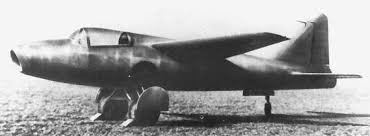We invite you to join us for a thrilling flight through the fascinating development of jet aircraft, a technological wonder that has revolutionized air travel and air defense. Join us for an exciting voyage through the past, present, and future of aviation, starting with the early proponents of jet power and ending with the most recent technological developments.
What is a jet airplane?
Airplanes using jet engines have much fewer moving parts than piston engines, making them more reliable, safer, and less expensive to run. They operate on kerosene, which is less expensive than gasoline, and create enormous thrust for their weight. As a result, jet aircraft have the ability to fly faster and larger than piston-engine aircraft.
The Inception of Jet Aviation
Picture a time before jet engines, when the skies were dominated by propellers. In the 1930s, it was the creative brains of Hans von Ohain and Sir Frank Whittle that dared to think in a different way. The turbojet engine was invented by British RAF officer Sir Frank Whittle, and Hans von Ohain in Germany worked with him to develop the Heinkel He 178, the first jet aircraft to be put into service. These pioneering efforts established the foundation for the future jet age.

The Heinkel He 178, the world’s first turbojet-powered aircraft.
Advancements in Jet Engine Technology
Jet engine technology advanced quickly after World War II, leading to important turning points in the history of aviation. The early jet propulsion pioneers, known as turbojets, were replaced by more effective and adaptable designs, such as high-bypass and turbofans.
The era of supersonic flight emerged with the development of afterburners. These devices inject additional fuel into the jet exhaust stream, increasing thrust and enabling aircraft to reach supersonic speeds. Iconic jets like the Concorde and Lockheed F-104 Starfighter utilized afterburners to achieve unprecedented performance levels.

Concorde supersonic passenger transport, which first flew in 1969
Modern Jet Engines
Modern jet engines are the pinnacle of aviation technology, using cutting-edge designs and materials to attain unparalleled levels of performance, efficiency, and reliability. The GE Aviation GE9X engine, which powers the Boeing 777X, is notable for its sheer size and power, as well as its use of novel technology to optimize fuel usage and reduce emissions. Pratt & Whitney’s PW1000G series, which uses geared turbofan technology, has revolutionized fuel economy and noise reduction in aircraft such as the Airbus A320neo and Bombardier CSeries. The Rolls-Royce Trent XWB, intended for the Airbus A350 XWB, represents cutting-edge engineering by emphasizing fuel efficiency and operational excellence. The CFM International LEAP engine also establishes new norms for environmental sustainability, powering aircraft such as the Airbus A320neo, Boeing 737 MAX, and COMAC C919.
Transforming Commercial Aviation
The advent of commercial jetliners drastically changed air travel. The contemporary era of commercial jet travel was initiated in 1958 by the Boeing 707 and continued by the Douglas DC-8 and Convair 880. These aircraft not only significantly shortened flight times but also improved accessibility and comfort for travelers abroad. Wide-body aircraft, such as the Boeing 747, which redefined the economics of air travel by increasing capacity and range, marked further milestones. A wonder of contemporary engineering, the Airbus A380 pushed the limits of efficiency and size in commercial aircraft.


